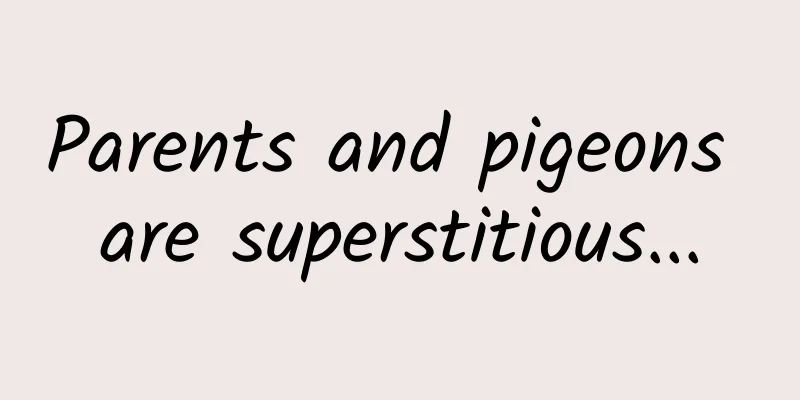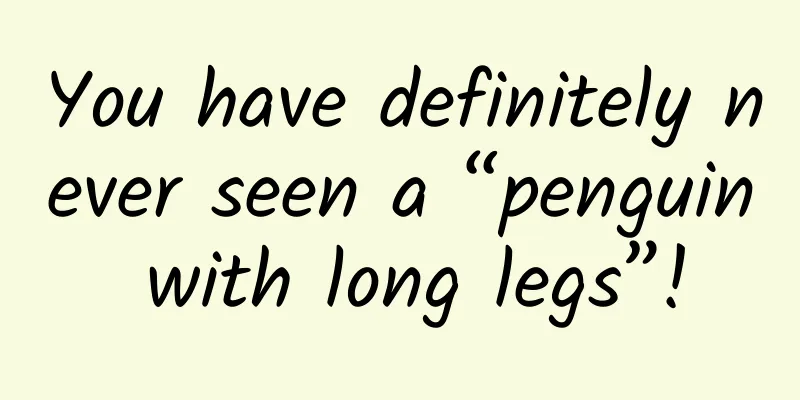Parents and pigeons are superstitious...

|
After stepping on a manhole cover, I quickly asked people around me to hit me three times, fearing that I would be unlucky; I didn’t open an umbrella in the house, fearing that I would not grow taller… In fact, all of the above behaviors have no scientific basis, they are just "white lies" passed down from generation to generation. The reason why people say “stepping on a manhole cover will bring bad luck” is because there is a danger of falling if you step on it, so you need to avoid it when passing by; the reason why people are not allowed to open umbrellas in the house is because they may accidentally damage the furniture, not because they are not really tall. With the popularization of science, everyone has realized that these statements are not advisable. But do you think that humans are the only ones who have these "magical superstitious operations" in nature? Humans are the smartest species in the world, and other species are certainly not "immune". Today we will learn about an animal experiment on "superstition" and scientific thinking. 01 Skinner's "Box" How was animal superstition discovered? Here we have to mention the famous psychologist Skinner. As an active practitioner of behaviorism, he once proposed a famous theory - in certain circumstances, when your behavior may directly lead to certain consequences, you will reasonably use or avoid these behaviors. For example, if a certain behavior is praised, people will repeat it in the future; if a certain behavior is criticized, people will reduce this behavior in the future. To test this theory, Skinner selected eight pigeons and fed them less food than they normally ate for several days so that they were in a hungry state during the test. During the test, Skinner put the pigeons in a box at a certain time every day, and installed a food dispenser inside the box. Every 15 seconds, food would automatically fall from the dispenser. In other words, no matter what the pigeons were doing, they would get a food reward every 15 seconds. Image source: psych SPACE.com After a while, something amazing happened. The experimental results showed that 6 out of 8 pigeons had very obvious reactions: one pigeon repeatedly raised its head, one pigeon began to circle counterclockwise in the box, one pigeon began to frequently hit its head against a corner of the box, and one pigeon spread its wings as if dancing... These pigeons had different reactions, either slightly or obviously, as if they could get food by maintaining this action, so these innocent peace doves gradually turned into "superstitious pigeons." 02 The stretched timeline & the disappeared timeline After getting this result, Skinner began to further demonstrate the process. He extended the time of food delivery from 15 seconds to one minute to observe the pigeons' reactions. At this time, the pigeons showed more energy. Since they did not wait for food in 15 seconds, the pigeons generally repeated their original performance more vigorously in the hope of food coming. In the end, in order to eliminate the pigeons' behavior, Skinner stopped providing food, and one of the habitual dancing pigeons jumped about ten thousand times before the dancing response completely disappeared. Skinner explained the six pigeons that behaved in the experiment: "This experiment can be said to prove a superstition. The pigeons thought that there was some causal relationship between their behavior and food. In fact, this relationship does not exist. These are their beautiful imaginations." Image source: psych SPACE.com From this we can see that when a certain accidental behavior reaps the desired result, this behavior will appear repeatedly in the same scene and is difficult to change. This is the negative impact of superstitious expectations. Although the pigeon's behavior will stop quickly, because the human reinforcement process takes a long time, some superstitions often last a lifetime (no wonder many superstitious parents are difficult to convince). Skinner's discovery has a special term: operant conditioning, which is significantly different from the Pavlov's conditioned reflex we are familiar with. In the latter, animals are completely passive, while in the former, animals have a certain degree of autonomy, and due to their initial unconscious behaviors, they form a certain fixed behavior pattern. 03 Why do each pigeon move differently? No matter how the timeline changes, these six pigeons always maintain their own "proprietary actions" while waiting for food. So how does this stubborn behavior come about? Image source: hippopx Through video analysis, this is because the pigeons' actions were different when the food first appeared. At that time, they were all hungry and were running around looking for food. Suddenly, food appeared with a certain action, and the pigeons realized: Could this action bring food? So during the verification process, "food fell from the sky" would appear every 15 seconds. This made the pigeons firm in their judgment and quickly established a causal relationship: it turns out that doing this action will result in food! 04 The root cause of superstition Why can this seemingly naive test lead to such a profound superstition? The reason lies in the lack of scientific thinking among the actors. In primitive society, when science was lacking, people relied on this "intuition" to avoid disasters. For example, if you picked an unfamiliar fruit from a tree and ate it in the morning, and then started to have diarrhea in the afternoon, the brain would quickly attribute the cause to the fruit being poisonous. If this law is wrong, it will just mean eating less fruit; if this law is correct, it can help humans survive and reproduce smoothly. Therefore, in the process of human evolution, this superstitious idea has become deeply rooted in our genes through the process of inheritance. Image source: hippopx Relying on direct judgment can be called "superstition". Scientific thinking is difficult because it is counter-intuitive and anti-evolutionary, and requires long-term training. But only scientific thinking can eliminate superstition. Superstition is easy, but rational thinking is difficult, but it is very important. Next time you encounter the "old sayings" of your elders, remember to refute them with reason and evidence, although it is difficult to convince them. Reviewer: Zhu Guangsi, member of Beijing Science Writers Association. Source: Tadpole Musical Notation Editor: Heart and Paper |
<<: New fabric allows secure payments and health monitoring with a swipe of the sleeve
Recommend
Uncovering the gray industry chain of short-lived mobile games that suck money like crazy
[[129846]] With the development of mobile Interne...
Department KPI assessment indicators, how to quantify the work of the SEO department?
Many customers often ask what the SEO work conten...
Product Operation: The logic of MiDu APP creating a hit product!
Core ideas: 1. The users tend to be fully quantit...
Introduction to Wandoujia application promotion business, advertising forms, and CPD charging methods!
1. Introduction to promotion business Wandoujia i...
Remember! Do not perform time-consuming operations in the UI main thread
question Since the release of Android Ice Cream S...
Which animals are better able to withstand the effects of climate change?
Global climate change is becoming one of the main...
Minimalist landscape painting course while traveling
Traveling and drawing minimalist landscape painti...
Summary of APP promotion channels: application stores, self-media channels, etc.
Since I started working in promotion, the two que...
Why did Apple's 3D Touch technology end in failure?
On September 21, why did Apple's 3D Touch fea...
How to place 360 information flow ads?
Compared with Toutiao ads, Baidu information flow...
How to perform fuzzy query on an encrypted mobile phone number?
Preface A few days ago, a friend from Knowledge P...
Weilai delivers more than 10,000 cars this year. He Xiaopeng is willing to admit defeat: ES8 purchase money will arrive soon
Yesterday, NIO just announced that the delivery v...
Life is not trivial, and my country's average life expectancy has increased again!
Recently, the National Health Commission held a p...
Is it healthier not to order takeout? Wrong! If you have these 7 bad cooking habits, it will hurt your body more than eating takeout
When it comes to ordering takeout Many people fee...
2022 Xinwendao He Kaiwen Postgraduate English Video Course
2022 Xinwendao He Kaiwen Postgraduate English Vid...









